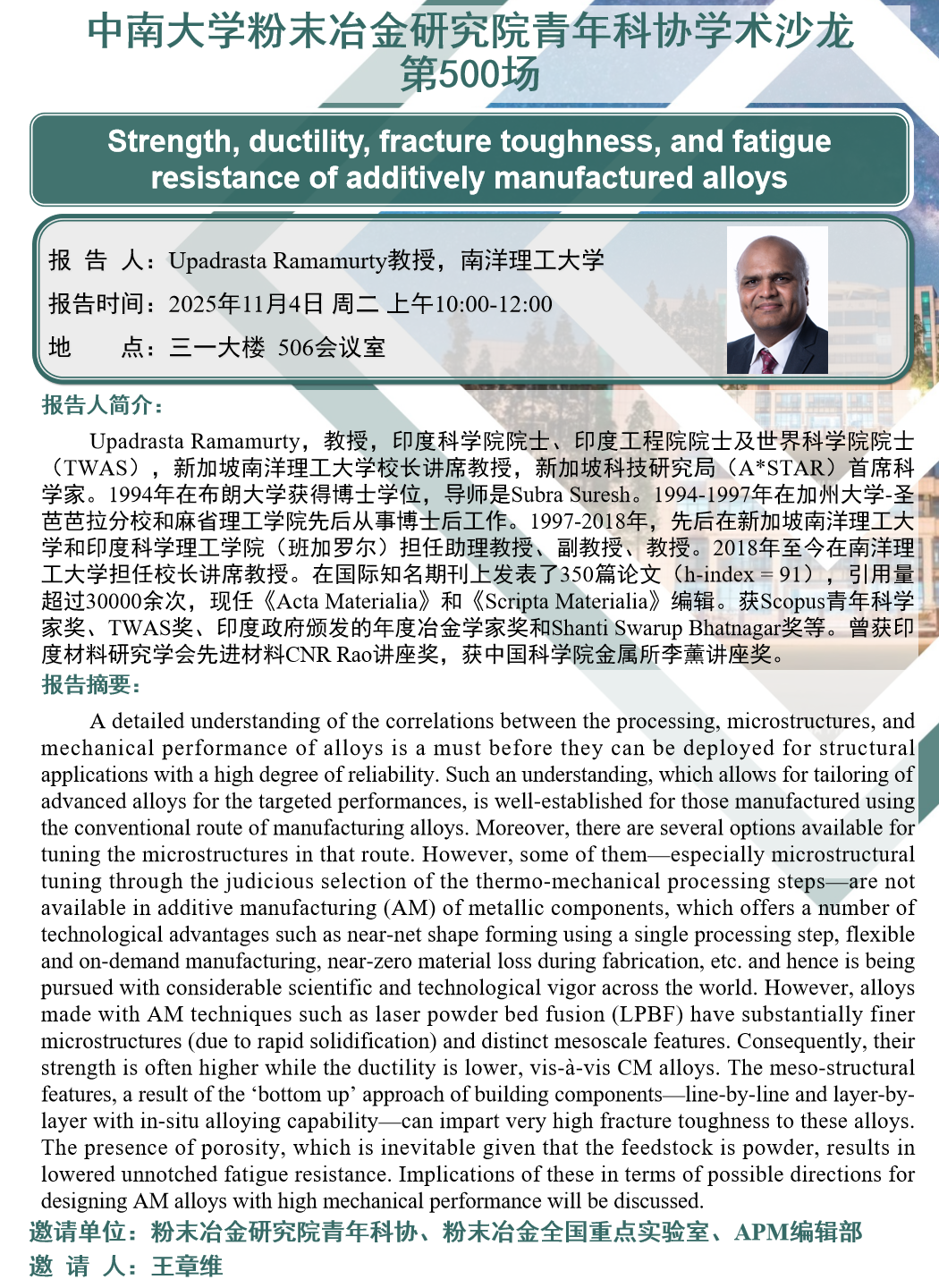主讲人:UpadrastaRamamurty教授,南洋理工大学
时间:2025年11月4日 10:00
地点:三一大楼506
主讲人简介:
Upadrasta Ramamurty,教授,印度科学院院士、印度工程院院士及世界科学院院士(TWAS),新加坡南洋理工大学校长讲席教授,新加坡科技研究局(A*STAR)首席科学家。1994年在布朗大学获得博士学位,导师是SubraSuresh。1994-1997年在加州大学-圣芭芭拉分校和麻省理工学院先后从事博士后工作。1997-2018年,先后在新加坡南洋理工大学和印度科学理工学院(班加罗尔)担任助理教授、副教授、教授。2018年至今在南洋理工大学担任校长讲席教授。在国际知名期刊上发表了350篇论文(h-index=91),引用量超过30000余次,现任《ActaMaterialia》和《Scripta Materialia》编辑。获Scopus青年科学家奖、TWAS奖、印度政府颁发的年度冶金学家奖和ShantiSwarup Bhatnagar奖等。曾获印度材料研究学会先进材料CNR Ra0讲座奖,获中国科学院金属所李薰讲座奖。
报告摘要:
A detailed understanding of the correlations between the processing, microstructures, andmechanical performance of alloys is a must before they can be deployed for structuralapplications with a high degree of reliability. Such an understanding, which allows for tailoring ofadvanced alloys for the targeted performances, is well-established for those manufactured usingthe conventional route of manufacturing alloys. oreover, there are several options available foltuning the microstructures in that route. However, some of them-especially microstructuraltuning through the judicious selection of the thermo-mechanical processing steps-are not available in additive manufacturing (AM) of metallic components, which offers a number oftechnological advantages such as near-net shape forming using a single processing step. flexibleand on-demand manufacturing, near-zero material loss during fabrication, etc. and hence is beingpursued with considerable scientific and technological vigor across the world. However. alloy!made with AM techniques such as laser powder bed fusion (LPBF) have substantially fineimicrostructures (due to rapid solidification) and distinct mesoscale features. Consequently, theistrength is often higher while the ductility is lower, vis-à-vis CM alloys. The meso-structuralfeatures, a result of the “bottom up’ approach of building components-line-by-line and layer-by.layer with in-situ alloying capability-can impart very high fracture toughness to these alloysThe presence of porosity, which is inevitable given that the feedstock is powder, results inlowered unnotched fatigue resistance. Implications of these in terms of possible directions fordesigning AM alloys with high mechanical performance wil be discussed.

